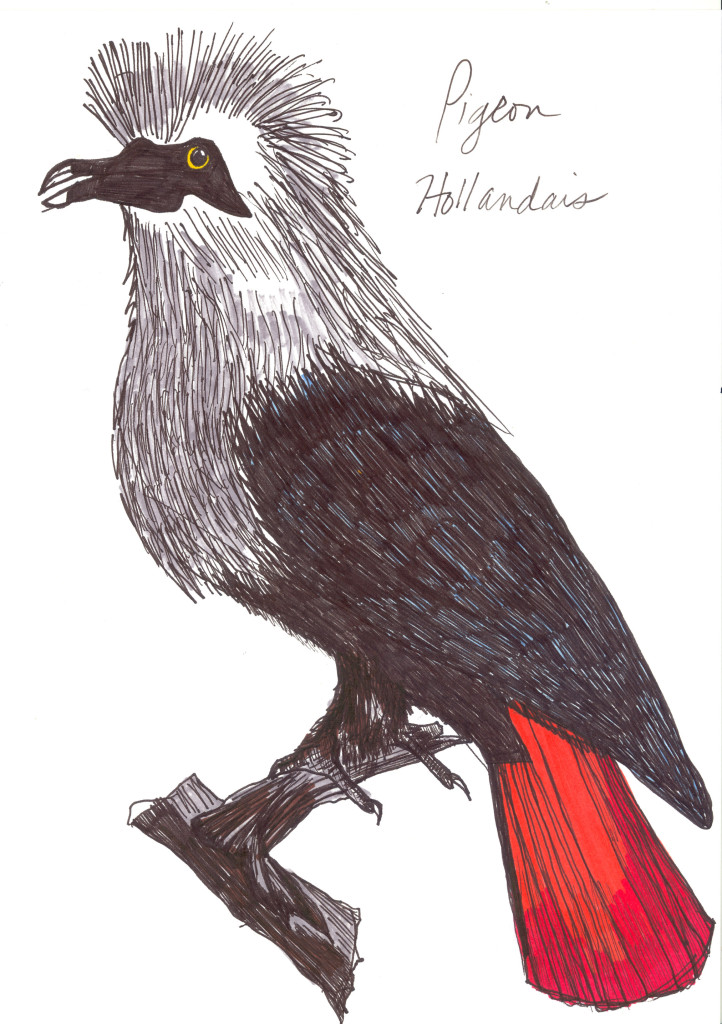An extinct species of blue pigeon formerly native to the Mascarene Island of Mauritius, east of Madagascar in the Indian Ocean.
It had stiff, white, pointed hackles around the head, neck and breast and blue plumage on the body, and it was red on the tail and the bare parts of the head. These colours were similar to those of the Dutch flag, and so inevitably the French naturalist and explorer Pierre Sonnerat called it the Pigeon Hollandaise. He was the first to bring the bird to the attention of ornithologists in 1782. It could raise its hackles into a ruff, which it used for display. Its winsome call apparently sounded like “barf barf”; luckily it also made a cooing noise. It ate fruits, nuts, and mollusks, and was once widespread in the forests of Mauritius.

A stuffed Mauritius Blue Pigeon, National Museum of Scotland
The early colonial history of the Mascarene islands is a confusing list of takeovers, alternating among Portuguese, Dutch, French and British colonizers, usually separate or sometimes in varying combinations. The first record of the Mauritius Blue Pigeon is in two sketches in the 1601–1603 journal of the Dutch ship Gelderland. The bird that posed for these sketches appears to be either freshly killed or stunned. Few descriptions of the behaviour of Mauritius Blue Pigeons are known; few specimens of the bird exist. One bird was brought to the Netherlands around 1790, where it lived in the menagerie of William V, Prince of Orange for three months before dying of edema. The only two known drawings from life of the species (by one G. Haasbroek) depict this particular bird. The illustrations show a displaying male raising its hackles into a ruff.

Much of the Mascarenes’ native fauna have become endangered or extinct since the human settlement of the islands in the 17th century, the most famous of which was the extinct flightless pigeon, the Dodo of Mauritius, poster child for extinction. Settlers cleared most of the forests for agriculture and grazing, and introduced many exotic species, including pigs, rats, cats, monkeys, and mongooses. A combination of habitat destructions, hunting, and predation drove the Mauritius Blue Pigeon extinct in the 1830’s.

In addition to the dodo, thirteen additional species of birds from the Mascarene islands are now extinct, including the Réunion Flightless Ibis, the Broad-billed Parrot, the Red Rail, the Rodrigues Rail, and the Rodrigues Solitaire. Today, sixteen endemic bird species still survive on the islands. The island of Mauritius has one of the highest population densities in the world; many of the surviving endemic species are still threatened with extinction, with little protection and great loss of habitat.

